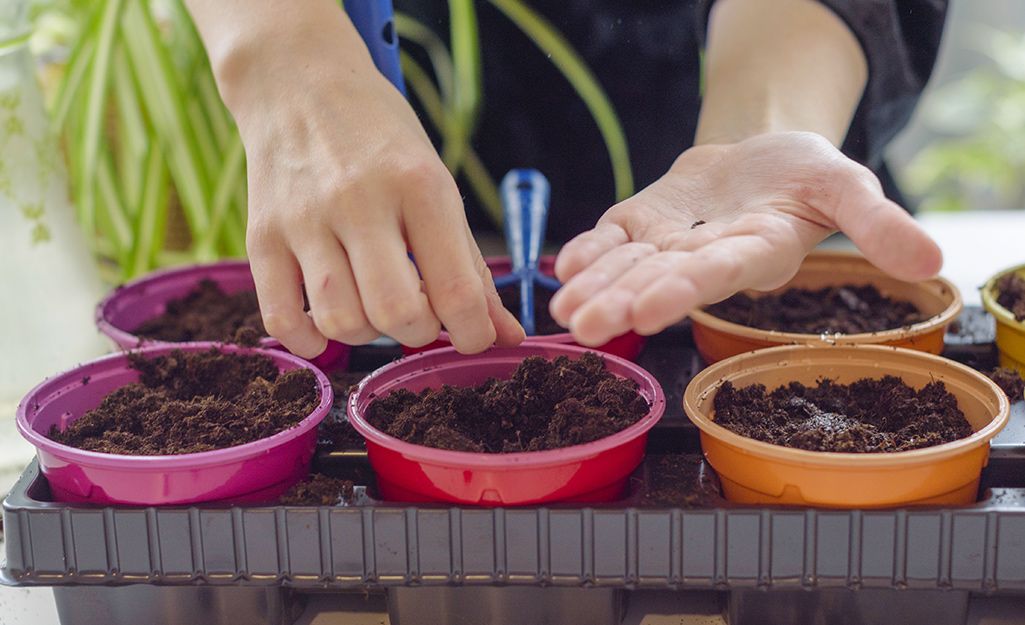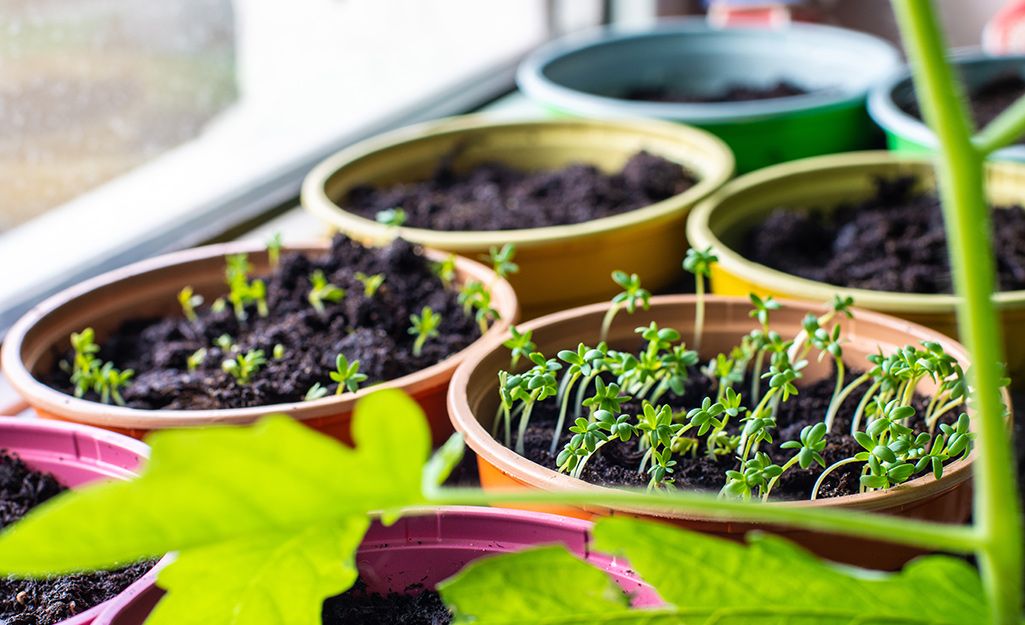How to Start an Herb Garden Indoors
It’s easy to grow a windowsill herb garden. Begin with purchased plants, plants you’ve dug from your garden or packets of seeds. While you’ll save money by sowing herb seeds, your herbs will be ready to harvest earlier if you start with seedlings.
If you dig herbs already growing in your garden to create your indoor herb garden, be sure no unwanted pests come with them. A quick swish in lukewarm, soapy water, followed by a rinse under a gentle stream of clean water, should dislodge aphids and other small pests, but it’s a good idea to quarantine any infested plants for a few days to make sure they’re pest-free.
A windowsill herb garden can provide fresh herbs for many dishes. First, find a window that gets at least six hours of bright sun each day. A southern exposure is fine for most herbs, while others, like mint and parsley, do better in windows that face west.
If you start with plants, follow the growing directions on their tags or labels. For a fun family project, let your kids learn how to grow herbs indoors with you.

If you start with herb seeds, read the seed packet for growing directions. Some take two or more weeks to germinate, while others sprout faster. The seed packet should also tell you how deep to plant the seeds or if they should be scattered over the soil, lightly misted and left uncovered. Oregano seeds, for example, need light in order to germinate and should not be covered.
Indoor temperatures round 70 degrees Fahrenheit are ideal for germination. If your home or workspace is cooler, you may want to put a heat mat under the seeds to provide more warmth and help them germinate.

Many herbs can be grown indoors for flavor or fragrance, so choose your favorites. If this is your first time growing a windowsill herb garden, you may want to select just three to five herbs to keep the garden manageable. Some of the best plants for your indoor herb garden include:
- Chives
- Marjoram
- Mint (try spearmint, peppermint, chocolate mint or other varieties)
- Oregano
- Parsley
- Bay laurel
- Lemongrass
- Thyme
- Rosemary
- Lemon balm
- Sage

If you’re growing herbs from seeds, sow them in shallow trays filled with seed starting mix or plant them directly in the pots or planters you want to use.
If you're growing herbs from purchased plants, transfer them from their nursery pots into pots or planters with drainage holes so they won't sit in water. If your planters don't have drainage holes, make a few in the bottom.
Most gardeners like to grow their herbs in four or six-inch pots that can easily fit on a windowsill. Clay pots can dry out quickly indoors, especially when a furnace or air conditioner is running, so you may want to use ceramic or plastic pots instead.

You can grow herbs almost anywhere in your home or office as long as you can meet their light, water, humidity and temperature needs.
If you don't have a window that gets bright light for at least six hours a day, you may need to add grow lights to your windowsill herb garden or use grow bulbs in a lamp or other fixture. Many different styles of grow lights are available.
All plants need a period of darkness, so don't run your grow lights all day. A timer that automatically turns them on and off makes it easy and convenient to give your indoor herb garden just the right amount of light the plants need each day.

In addition to giving your herbs enough light, you'll need to water them regularly. Don't let them dry out, but don't overwater them, either. Pour out any excess water that collects in the tray or saucer they're sitting in.
Fertilize your herbs while they are actively growing with a fertilizer made for vegetables and herbs. Read the fertilizer label to know how much and how often to feed. Too much fertilizer will produce a lot of foliage but weakens the flavors.
An indoor herb garden also needs high humidity and good air circulation. Mist your herbs a couple of times a week with water from a spray bottle or place them on a tray filled with pebbles and a little water, keeping the bottom of the pots slightly above the water. If your indoor herb garden doesn’t get good air circulation, use a fan around them, but don’t let it blow directly on the plants.

Once they’re up and growing, most herbs will do fine in typical indoor temperatures, which usually range from 65 to 75 degrees Fahrenheit. During the winter, keep your herbs away from windows that might transmit the cold through the glass, and don’t let them touch any windows that heat up when the sun shines in. Avoid placing the herbs near drafty windows and doors or heating and cooling vents.

You don’t need a lot of gardening tools for a DIY herb garden. A small watering can, sharp snips for harvesting the herbs, a spray bottle for misting them and a small trowel for digging up outside plants to bring in can be helpful.
If you’re starting with herb seeds, a seed starter kit with plant markers will help you remember what’s planted in each pot.

Do a little research on the herbs you want to grow, so you’ll know which ones have different growing requirements. Basil, for example, is a little different from most other herbs and does best when grown at a constant 75 degrees Fahrenheit. Its leaves will start to wilt if it gets too cold.
If you see roots coming out of the bottom of your herb pots, move your plants into pots or planters one size larger and give them fresh potting soil. Some herbs can be divided and replanted in small pots so they’ll still fit in a windowsill herb garden.
Afraid you’ll underwater or overwater your herbs? Use a soil moisture meter. It will help you know when it’s time to water.
Full-spectrum grow lights are great for herbs. Run them for 12 to 16 hours a day for herbs that need bright light and keep your plants within a foot or so of the bulbs.

After you’ve chosen the plants for your indoor herb garden, show them off in a planter that matches or complements your home or office.
If you live in an apartment or have limited space, grow your herbs in an indoor hanging planter. You'll also find a variety of vertical planters and indoor garden planters available.
Learn how to start an indoor herb garden, and you'll have fresh parsley, thyme and other flavorful herbs for your favorite dishes. Start with seeds or plants, or dig up plants from your garden and transplant them into containers to keep in a bright window or under grow lights. A timer for the grow lights will help give them the right amount of light each day. Herbs will thrive in average home temperatures but they like good air circulation and high humidity, so spray them regularly with a mister, group them together or keep them near a kitchen sink.
*article from Home Depot


